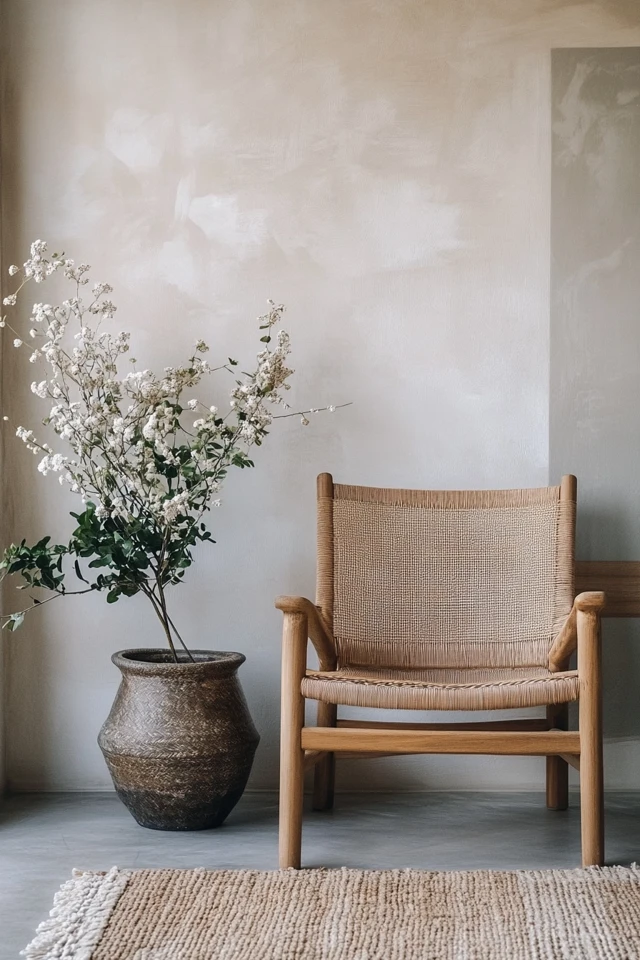Imagine walking into a space that feels like a calming ocean breeze—light, airy, and beautifully uncluttered. That’s the magic of blending coastal and minimalist styles. Coastal minimalism is about combining the relaxed, breezy vibe of a beach house with the clean, functional simplicity of minimalism. It’s perfect for anyone who loves the sea but prefers a refined, understated aesthetic.
I first stumbled upon coastal minimalism while searching for ways to declutter my home without losing its personality. I loved the idea of light-filled spaces and natural materials but didn’t want the nautical overload of anchors and seashells everywhere. After incorporating this hybrid style, my home felt instantly more serene. It became my personal retreat, and I’ve been hooked ever since.
If you’re looking to create a simple yet elegant beach-inspired space, here’s your ultimate guide to mastering coastal minimalism.
1. Keep the Color Palette Light and Neutral
Why It Works
The foundation of coastal minimalism is a soothing color palette inspired by the beach—think soft sands, ocean blues, and crisp whites.
How to Use It
- Stick to whites, creams, and light grays as your base colors.
- Add subtle accents in muted shades of blue, seafoam green, or beige.
- Avoid overly bold or bright colors, which can disrupt the minimalist aesthetic.
Styling Tip:
Paint walls in a crisp white or soft beige, and incorporate color through pillows, rugs, or art.
2. Embrace Natural Materials
Why It Works
Natural materials bring warmth and texture to minimalist spaces while echoing the organic beauty of the coast.
How to Use It
- Incorporate jute or sisal rugs, rattan furniture, and linen fabrics.
- Use light woods like oak or pine for furniture and accents.
- Add touches of stone, such as a marble coffee table or stone planters.
Example:
Pair a light wood dining table with woven rattan chairs for an effortless coastal vibe.
3. Declutter for Serenity
Why It Works
Minimalism thrives on simplicity, and decluttering helps create a space that feels open and inviting.
How to Do It
- Edit your decor by keeping only the essentials.
- Store away unnecessary items to maintain clean surfaces.
- Choose multifunctional furniture to save space and reduce clutter.
Styling Tip:
A minimalist coffee table styled with a single ceramic vase and a stack of books keeps the look clean and intentional.
4. Let in Natural Light
Why It Works
Light-filled spaces are a hallmark of both coastal and minimalist styles, creating an open, airy atmosphere.
How to Do It
- Use sheer curtains or keep windows bare to let in maximum light.
- Place mirrors strategically to reflect light and make the space feel larger.
- Avoid heavy drapes or dark window treatments.
Styling Tip:
Hang a large round mirror opposite a window to amplify natural light and enhance the feeling of spaciousness.
Picture Gallery
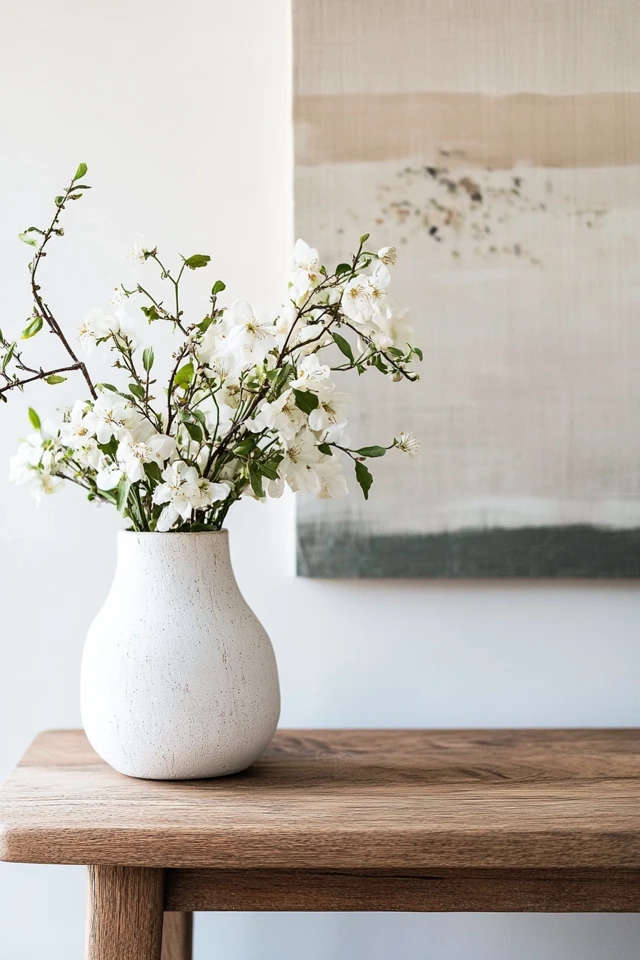
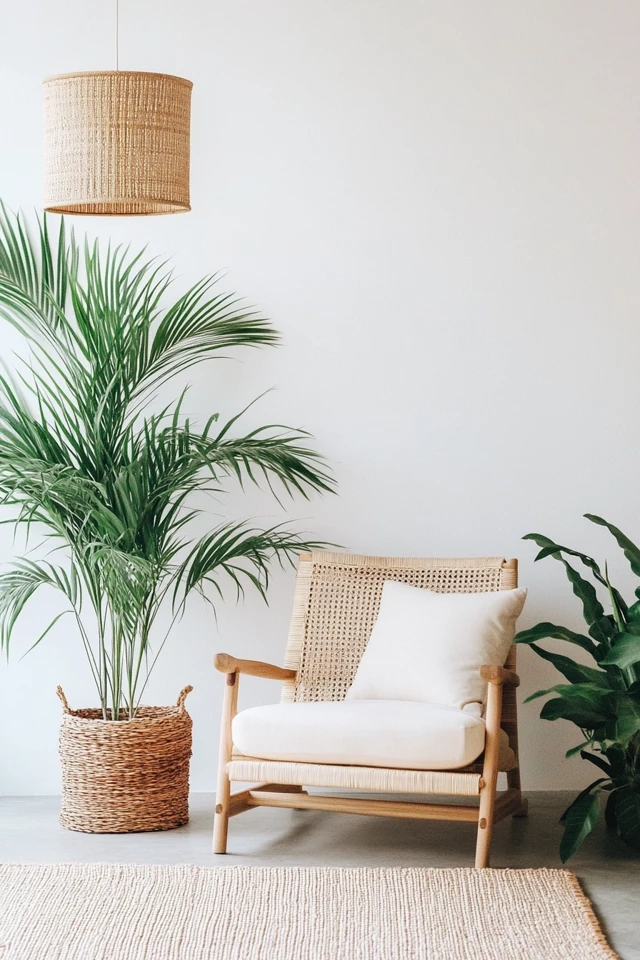
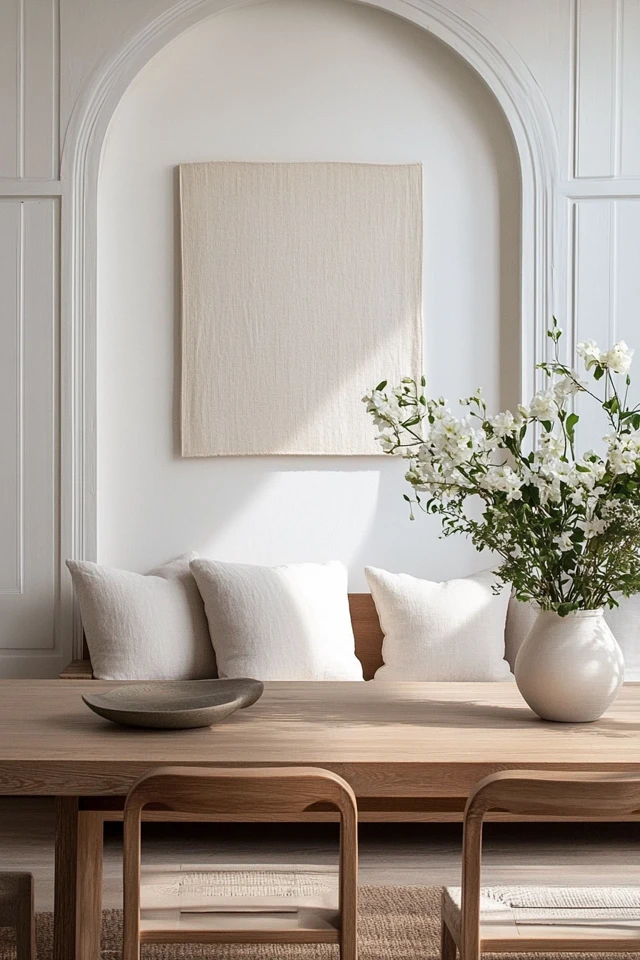
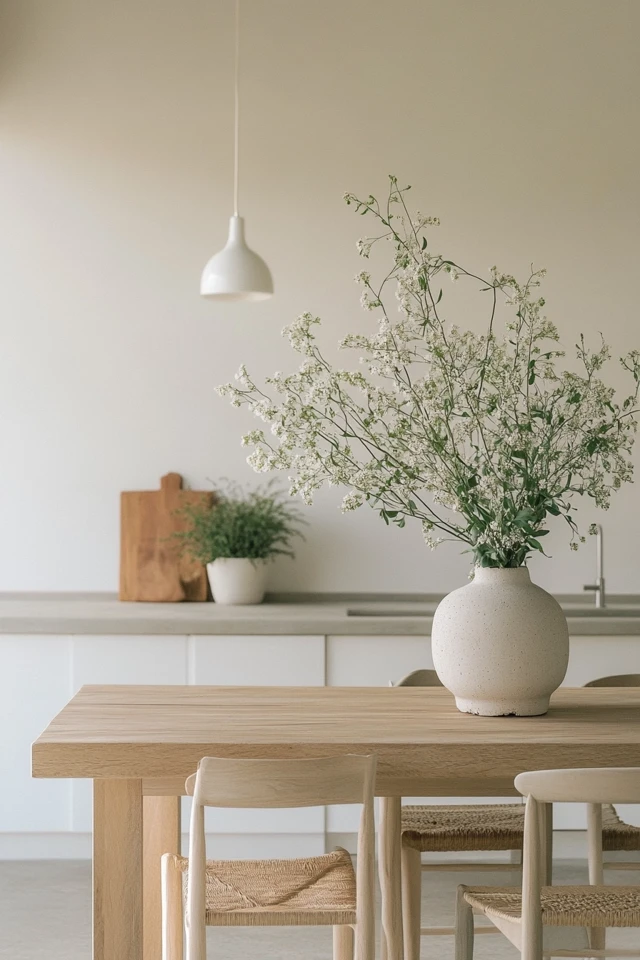
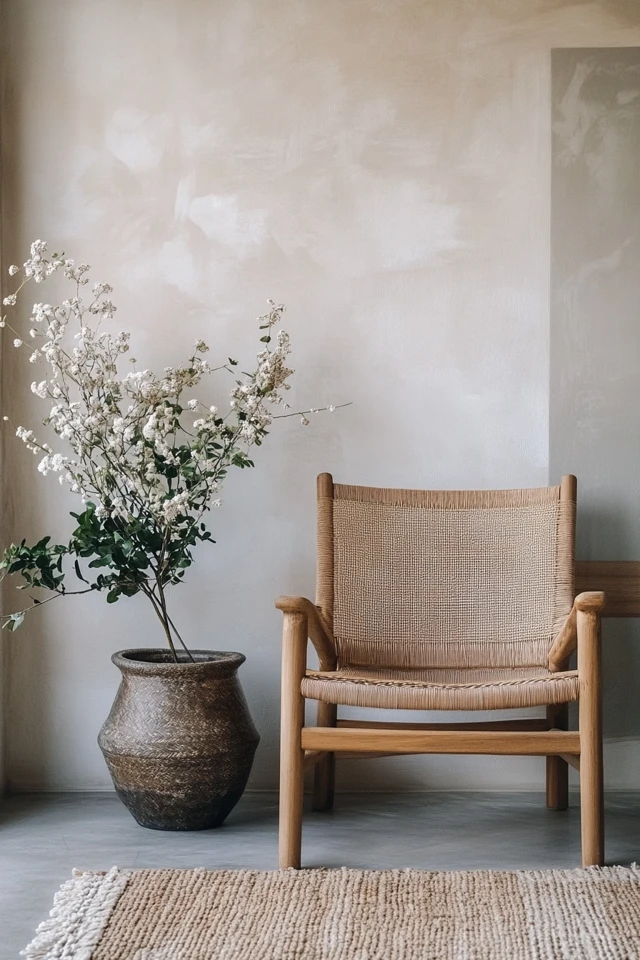
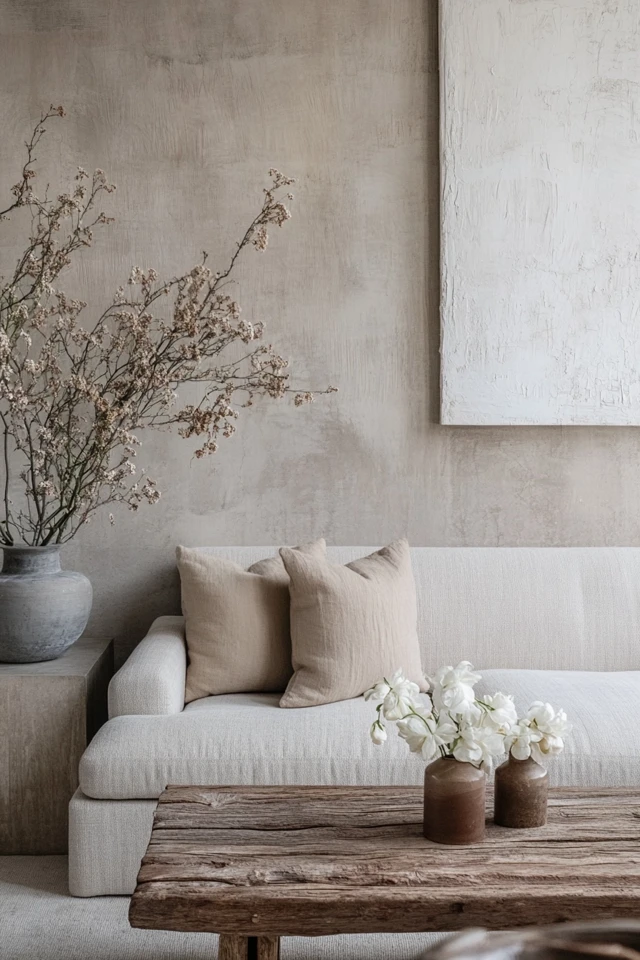
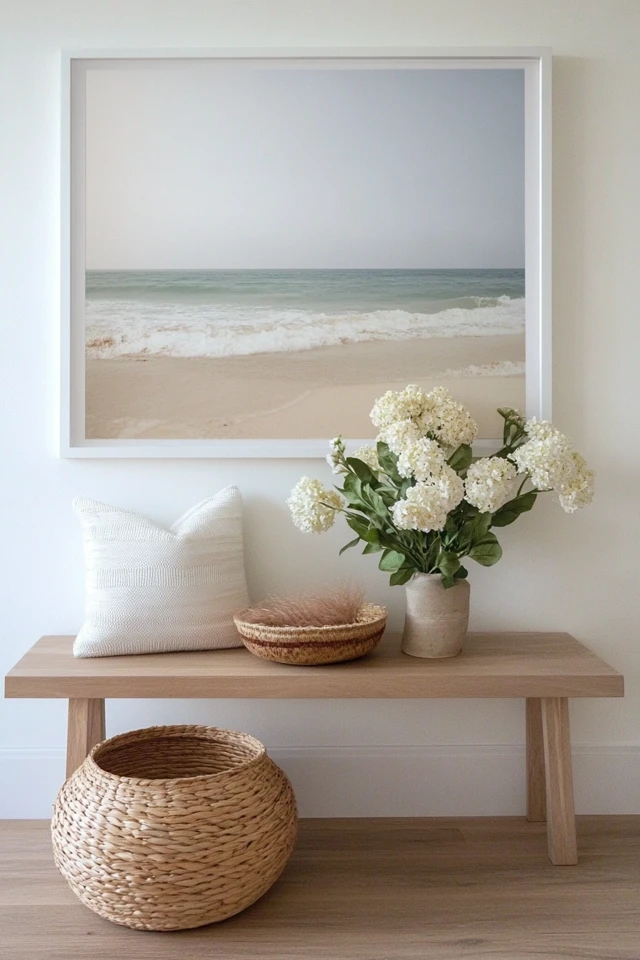
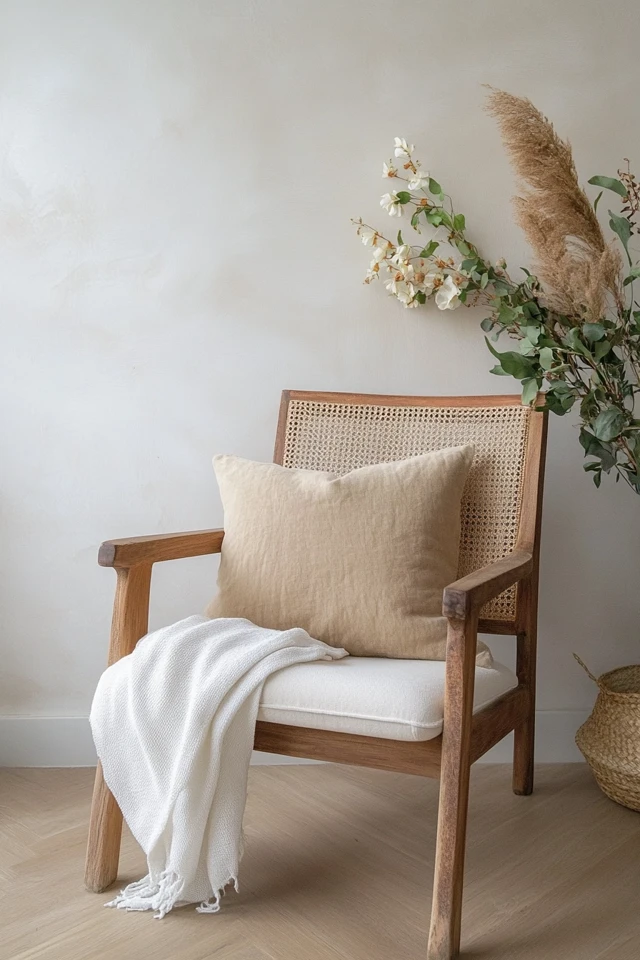

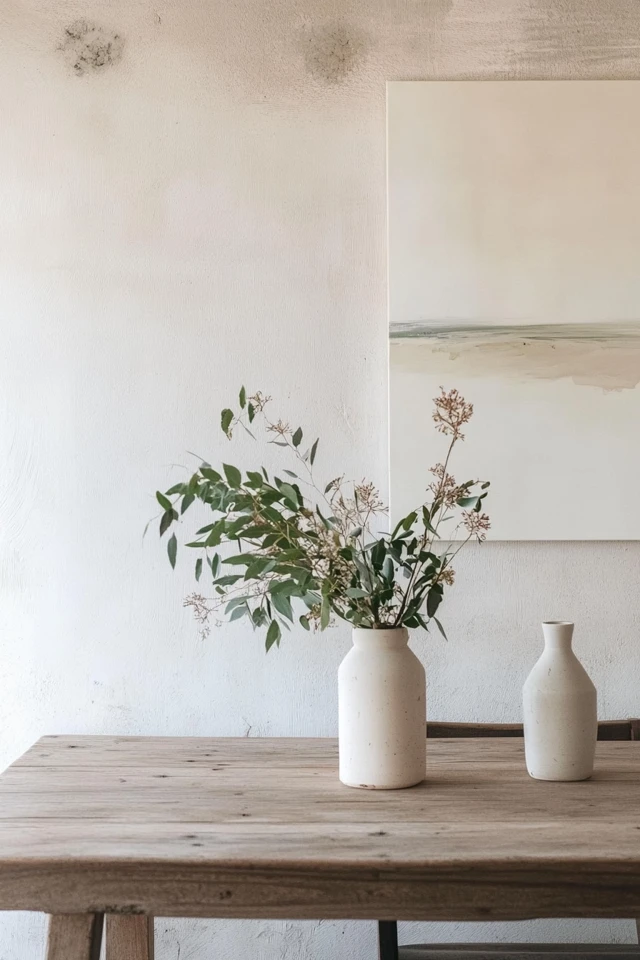
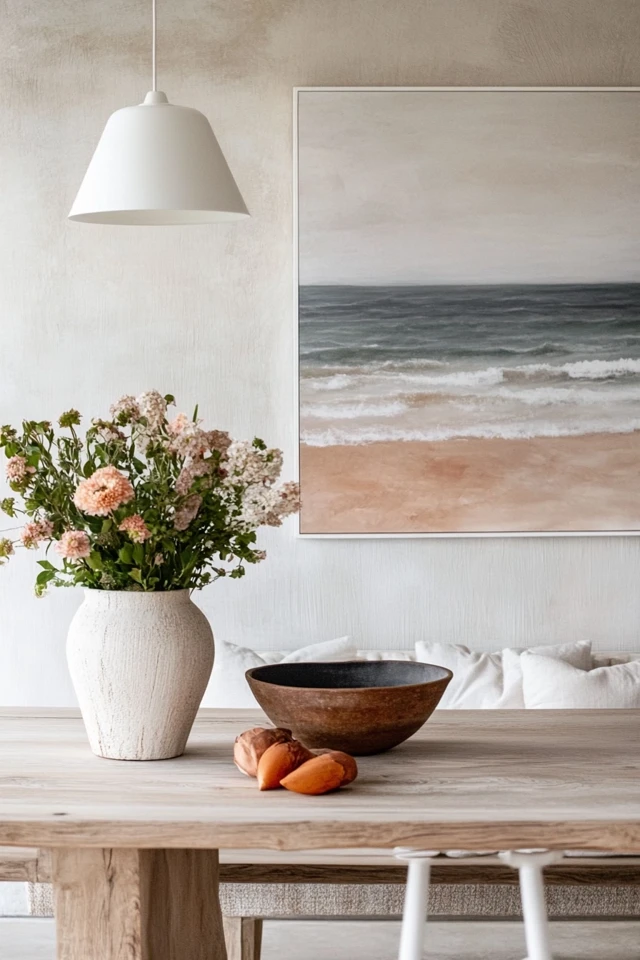
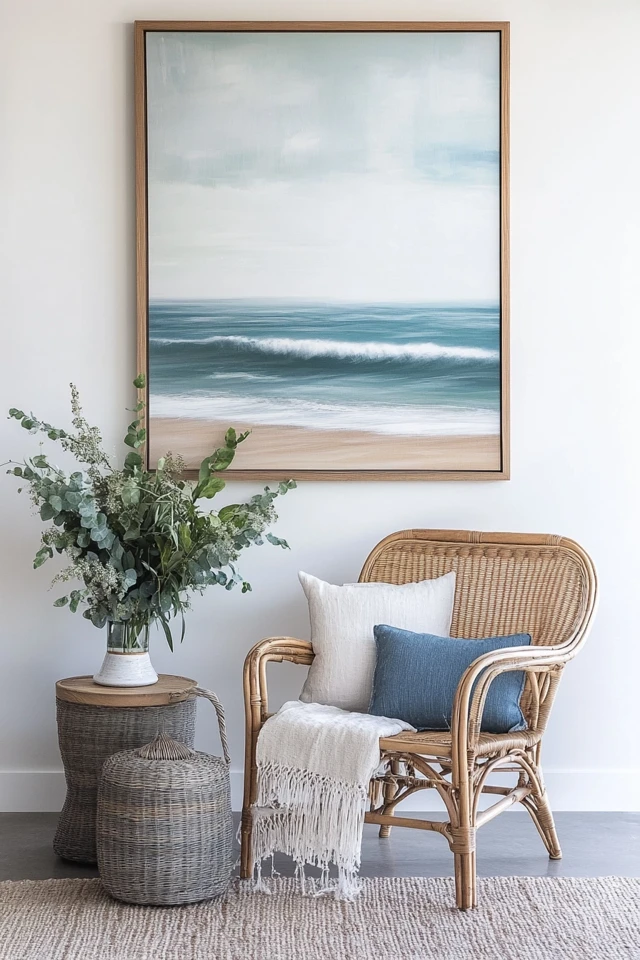
5. Use Subtle Coastal Accents
Why It Works
Coastal minimalism avoids over-the-top nautical themes, opting for subtle nods to the sea.
How to Do It
- Decorate with abstract ocean-inspired art or soft watercolor prints.
- Add texture with woven baskets, driftwood, or coral sculptures.
- Incorporate striped or solid throws in blue or white.
Example:
A single driftwood centerpiece on a dining table brings a touch of the coast without overwhelming the space.
6. Choose Functional Furniture
Why It Works
Minimalism focuses on functionality, and coastal design complements it with relaxed, comfortable furniture.
How to Use It
- Opt for sleek, low-profile furniture with clean lines.
- Choose slipcovered sofas in white or neutral tones.
- Use light wood or whitewashed finishes for tables and storage pieces.
Styling Tip:
Pair a white linen sofa with a light wood coffee table for a look that’s both cozy and refined.
7. Incorporate Layers of Texture
Why It Works
Minimalism can feel stark without texture, and coastal design brings the perfect balance with natural, layered elements.
How to Use It
- Layer jute rugs with soft cotton or wool rugs for added warmth.
- Use pillows and throws with subtle patterns or fringed edges.
- Add texture through woven planters, baskets, or poufs.
Styling Tip:
A chunky knit throw draped over a linen armchair adds a cozy layer while maintaining the minimalist vibe.
8. Focus on Quality Over Quantity
Why It Works
Coastal minimalism prioritizes well-made, timeless pieces that enhance the space without overwhelming it.
How to Do It
- Invest in furniture and decor with clean, simple designs and high-quality materials.
- Avoid trendy or overly ornate pieces that may clash with the minimalist aesthetic.
- Stick to a few standout pieces to anchor the room.
Example:
A sculptural pendant light above a dining table can serve as a functional yet striking centerpiece.
9. Blur Indoor and Outdoor Spaces
Why It Works
Coastal design embraces a connection to nature, which aligns perfectly with minimalist values of harmony and balance.
How to Do It
- Use large glass doors or windows to connect indoor spaces with outdoor views.
- Incorporate greenery with simple planters or small potted trees.
- Extend your design to outdoor areas with complementary furniture and decor.
Styling Tip:
A small balcony with a rattan chair and a neutral outdoor rug creates a seamless flow between indoors and out.
10. Keep Decor Simple and Intentional
Why It Works
Minimalist decor should feel intentional, with each piece serving a purpose or enhancing the overall aesthetic.
How to Do It
- Use decor sparingly—stick to a few key accents like vases, books, or small sculptures.
- Choose items in natural materials or muted colors to keep the look cohesive.
- Avoid overly thematic or cluttered arrangements.
Styling Tip:
A single ceramic vase filled with pampas grass on a console table creates a statement without adding visual clutter.
How to Maintain Coastal Minimalism
- Declutter Regularly: Reassess your decor and remove items that no longer serve the space.
- Stick to the Palette: Keep new additions in line with your light and neutral color scheme.
- Clean Often: A tidy space helps maintain the calm, airy feeling of coastal minimalism.
- Refresh Textiles: Rotate throws and pillows seasonally to keep them looking crisp and inviting.
- Edit Decor: Swap out decorative accents occasionally to keep the space feeling fresh and intentional.
Conclusion
Blending coastal and minimalist styles creates a space that feels both serene and sophisticated. By focusing on light colors, natural materials, and simple, intentional design, you can craft a home that’s as calming as a day by the sea.
When I embraced coastal minimalism in my own space, it became more than just a design—it was a mindset. My home felt lighter, more peaceful, and infinitely more enjoyable to spend time in.
Now it’s your turn! Use these tips to create a space that reflects the beauty of the coast while embracing the simplicity of minimalism.
FAQ
Can I mix coastal minimalism with other styles?
Yes! Coastal minimalism pairs well with Scandinavian, bohemian, or even modern industrial styles.
What’s the easiest way to start incorporating coastal minimalism?
Start with a light, neutral color palette and declutter your space. Add natural materials like jute rugs or linen curtains to introduce texture.
Do I need to live near the coast to use this style?
Not at all! Coastal minimalism is about creating a calming, beach-inspired atmosphere, no matter where you live.
How do I keep my space from feeling too stark?
Layer textures, like soft throws and woven accents, to add warmth and interest without cluttering the space.
What’s the best way to accessorize a coastal minimalist space?
Choose a few key accents, like a driftwood sculpture or a ceramic vase, and display them intentionally for a clean yet personal look.

